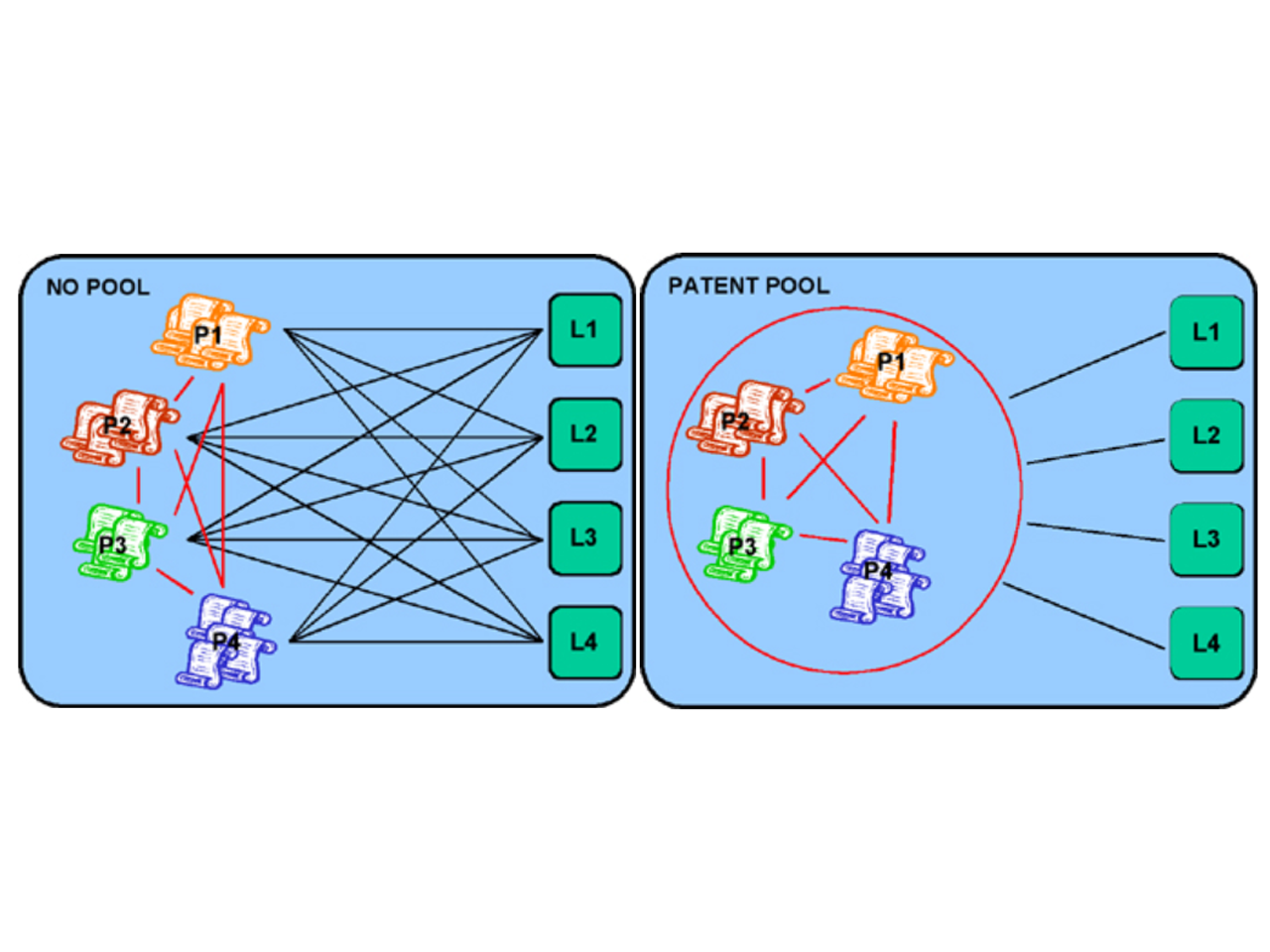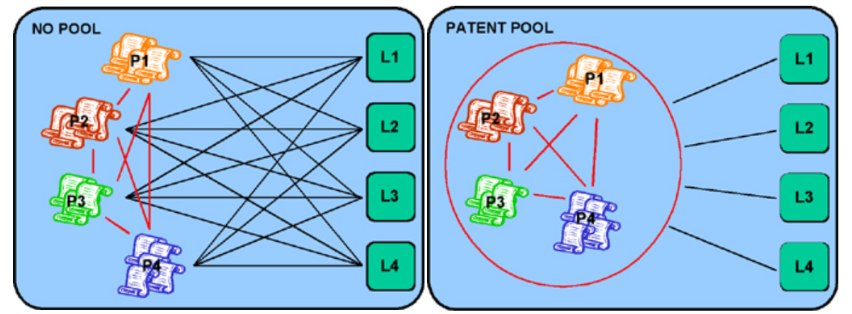What is a Patent Pool?
While patent pools have existed at least since the 1850s, there’s still much confusion about the purpose they serve, how they are formed, and how they operate. This multi-part series explores these issues.
Introduction to the Series
While patent pools have existed at least since the 1850s, there’s still much confusion about the purpose they serve, how they are formed, and how they operate. This multi-part series explores these issues.
The first article covers what a patent pool is and the benefits that it provides.
What is a Patent Pool?
According to the 1995 Department of Justice (DOJ) document entitled Antitrust Guidelines for the Licensing of Intellectual Property, patent pools are “agreements of two or more owners of different items of intellectual property to license one another or third parties.” The Guidelines further state that, “These arrangements may provide pro-competitive benefits by integrating complementary technologies, reducing transaction costs, clearing blocking positions, and avoiding costly infringement litigation. By promoting the dissemination of technology, cross-licensing and pooling arrangements are often pro-competitive.”
The first US patent pool was the Sewing Machine Combination which was formed in October 1856. The pool combined the intellectual property of Elias Howe, the inventor of the sewing machine (Patent Number 004750), and three companies who also owned sewing-machine related IP, including Singer. The agreement came together after years of cross-party litigation regarding various technical improvements to the parties’ sewing machines. The pool freed the participants and other licensees to create, improve, and market sewing machines without fear of litigation.
A similar pooling of interests of various airplane manufacturers resulted in a patent pool and trade association called the Manufacturers Aircraft Association, formed by companies like the Wright Company and Curtiss Company in 1917. The group was spearheaded by then-Acting Secretary for the Navy Franklin D. Roosevelt to expedite the production of military aircraft for World War I.
In addition to breaking patent logjams between competitors and creating other benefits, patent pools also dramatically reduce transaction costs between IP owners and licensors and accelerate time to market.
Absent the pool, each licensee would have to search for and identify all relevant IP owners and negotiate individual contracts with each, multiplying the transaction costs. The search and negotiations would take time, delaying time to market and involve substantial costs. A lack of transparency by any one licensor could contribute to uncertainty about the cost of using patented technology. Moreover, the licensee would have no guarantee that all necessary patents would be available for licensing even after entering into multiple licenses from other sources.
This is shown in the figure above, from an article entitled Dealing with Patent Fragmentation in ICT and Genetics: Patent Pools and Clearing Houses. On the left, without a pool, the four licensees have to negotiate separately with the four licensors, necessitating 16 separate agreements. On the right, once the pool is formed, the same rights are transferred with four agreements, reducing costs and accelerating product development and launch.
Aligning interests and ensuring good-faith behavior Innovative technologies, in particular in Information and Communication Technologies (ICT), often stem from the collaboration of many innovators. Using their technologies (and thus their intellectual property) requires implementers to take a license, which rewards the innovators for their contribution and for making such technologies available, and fuels further innovation. So, taking licenses from many innovators is often necessary, or the implementers will bring to market counterfeited products. Even assuming all necessary licenses are available, acquiring those licenses is complicated and time-consuming: limited resources, complex patent landscapes and information asymmetry often contribute to friction and tensions in licensing transactions.
Today patent pools are essential to remove friction and tension and create greater certainty for users of intellectual property: making large swaths of IP around one technology domain available in a one-stop-shop, providing clarity and visibility for the licensed technologies and the associated terms and conditions. This is invaluable information for implementers who want to be good citizens and respect the intellectual property of innovators and their legal rights, and fund future innovation.
The lack of understanding for the role played by patent pools and its administrators has often brought extremists to label patent pools and its administrators as “patent trolls”: if these commentators would understand pools formation and operation, as well as the benefits that they offer to willing licensees, this wouldn’t happen. Invention is not free; and history has shown that we all benefit when fair returns on investment in innovation create even more innovation. Of course, also in the context of patent pools and their operations, negative incentives must be placed on the bad-faith behavior of both implementers and patent owners to promote efficient pool licensing operation and a level playing field among implementers.
As you’ll read in later articles, for these and other reasons, patent pools invest significant time and expense to ensure the actual use of the patents covered in the pools.
The next post will cover how patent pools are formed.

